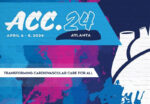When deciding on the optimal coronary artery revascularization treatment of coronary artery disease (CAD) patients, physicians normally assessed clinical presentation, surgical risk, survival expectation, and the likelihood of a better quality of life. Decisions are made after careful consideration, by the Heart Team, who will ponder options such as coronary artery bypass graft (CABG), percutaneous...
CART Technique for Chronic Total Occlusions
The retrograde technique has significantly improved the success of percutaneous treatment of chronic total occlusions (CTO). After crossing a collateral channel, creating a connection between the anterograde and retrograde systems is key. The most common technique for this is reverse controlled antegrade and retrograde subintimal tracking (reverse CART). This technique involves inflating a balloon over...
Quality of Life in Medium-Risk Patients Treated with TAVR vs SAVR
Transcatheter aortic valve replacement (TAVR) and surgical aortic valve replacement (SAVR) have demonstrated similar outcomes in symptomatic aortic stenosis patients (at high or intermediate risk) in terms of 5-year survival. When evaluating the quality of life (QoL) of these two treatment strategies in patients with high surgical risk, there were no significant differences at 5...
Acute Myocardial Infarction After TAVI: Retrospective Analysis of >200,000 Implants
Coronary artery disease is common among patients considered for transcatheter aortic valve implantation (TAVI). With the expansion of the indication for TAVI to a population with lower surgical risk, and therefore younger, there has been a gradual increase in the incidence of coronary events. However, there is limited data on treatment strategy and outcomes in...
Reinterventions in TAVR with Self-Expanding Valves
TAVR treatment of severe aortic stenosis is becoming more and more common, showing comparable evolution, or even superior in some studies when using the femoral approach, vs. surgical aortic valve replacement (SAVR). One of the current challenges is TAVR durability vs. SAVR. Even though 9 or 10 years has been deemed acceptable by current standards,...
Treatment of Recurrent In-Stent Restenosis with Drug-Eluting Stents: 10-Year Outcomes
In-stent restenosis (ISR) remains the main limitation in the percutaneous treatment of coronary artery disease, with a prevalence between 5% and 10% after implantation of latest-generation drug-eluting stents (DES). Therapeutic recommendations for it include the implantation of a new DES and the use of drug-coated balloons (DCB). The rate of recurrent ISR ranges from 10%...
EXCEL Study: Complete vs. Incomplete Revascularization
Regardless of whether it is attempted through percutaneous coronary intervention (PCI) or myocardial revascularization surgery (MRS), complete revascularization (CR) is not always achieved. Overall, it is more frequent with surgery than with percutaneous treatment. Additionally, incomplete revascularization (IR) has proven to be associated with worse outcomes compared to CR. Researchers conducted an analysis of the...
Peripheral Vascular Disease: Our Reality in Latin America, with the LATAM SOLACI Peripheral Registry
On the one hand, chronic peripheral vascular disease is on the rise. On the other, over the past 20 years, percutaneous coronary intervention (PCI) has gained considerable ground thanks to various new devices, replacing surgery as an alternative in most scenarios. Both strategies have shown similar results, but PCI has fewer complications and shorter hospital stays....
ACC 2024 | ORBITA-COSMIC
Coronary sinus reduction (CSR) is a relevant area of study for the treatment of refractory angina, with hopes of improving myocardial perfusion. However, to date, there are no conclusive data. The ORBITA-COSMIC study is a randomized, double-blind, placebo-controlled trial conducted at six centers in the UK. Researchers recruited patients with angina and chronic ischemia who...
ACC 2024 | REDUCE AMI: Beta-Blockers after Myocardial Infarction and Preserved Ejection Fraction
Most clinical trials have shown benefits of beta blockers after acute myocardial infraction, including patients with extensive AMI, and these were carried out in the era before AMI was diagnosed with biomarkers and prior to treatment with coronary angioplasty, use of antithrombotic agents and high intensity statins, and angiotensin-aldosterone system inhibitors. The aim of this...








